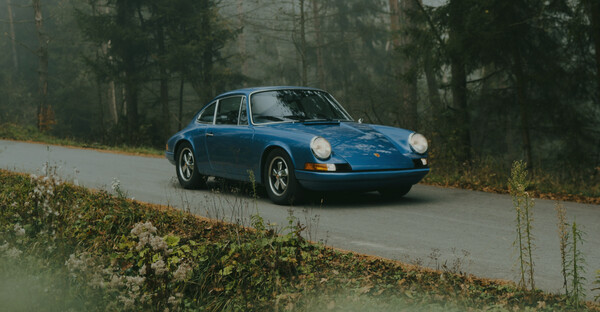Description
When you look at it you immediately recognise it, because the styling is unique: it is a Jaguar.
A design that has made the XJ6 the most commercially successful model in the history of the Coventry-based carmaker.
How did the Jaguar XJ6 2. 8 come about? Towards the end of the 1960s, Jaguar urgently needed to renew its image in order to compete with increasingly fierce rivals in the luxury car market. It was necessary to introduce a completely new car that would modernise the saloon range, by then made up of similar models (240, 340, S Type, 420 and 420 G) that threatened the brand's prestige gained through a careful commercial policy.
Presented in Paris on 26 September 1968, during the Motor Show reserved for the press and trade, the XJ6 (an acronym for eXperimental Jaguar) was the last car designed under the direction of Sir William Lyons, who remained in charge even after Jaguar's acquisition by the British Motor Corporation in 1966. The aristocratic character of the XJ6 was consistent with Jaguar's traditional image, but its muscular profile showed a new appreciation for taut lines, also evident in the grille. The long front bonnet was criss-crossed by well-defined but discreet ribs. In keeping with Jaguar tradition, the cabin was neat and well finished, with a full complement of instruments. The new XJ6 received immediate critical and public acclaim, partly due to its competitive price. However, some brand aficionados expressed misgivings about the interior, which was considered modern and streamlined, but lacked the opulence of previous models. For the first time the dashboard, although of excellent workmanship, was veneered in varnished wood instead of solid walnut; furthermore, the leather upholstery, only standard on some versions, no longer included the door panels, which were covered in vinyl. Mechanically, the XJ6 owed much to the 420 G, from which it derived its excellent independent rear suspension, modified only in the length of the axle shafts to suit the wider track. On the front end, however, an anti-dive geometry made its debut, which, thanks to a different arm angle and the outermost position of the coaxial dampers, ensured a much better set-up. The XJ6 was also the first Jaguar saloon to be fitted with rack-and-pinion steering (with power steering as standard on the more equipped versions). To meet the new safety requirements, the lower part of the body, the transmission tunnel, the front bulkhead and the bulkhead under the rear seat formed a protective cell for the passenger compartment, reinforced by two sturdy cross members under the seats. The steering column also collapsed to absorb energy in the event of a collision. Two straight-six engines with twin-shaft distribution were offered on debut: the familiar 4235 cc XK, capable of producing 245 hp, and a new short-stroke of 2791 cc and 142 hp. The XJ6 4. 2, which offered power steering as standard, could be ordered with either a four-speed manual gearbox plus overdrive or a three-speed automatic, while the 2. 8 was only available with a manual gearbox and the option of Laycock de Normanville overdrive. From June 1970, the 2800 engine was modified to solve piston puncture problems due to self-ignition. The launch of the XJ6 was supported by an advertising campaign in which Sir William Lyons described the XJ6 as 'the most beautiful and refined saloon Jaguar had ever built'. The slogan read: 'To a world of compromise, we do not contribute'. The success of the XJ6 was such that Jaguar produced two further series (1973-1979 and 1979-1986), with engines of 3442 cc (replacing the 2800) and 4235 cc, also with straight-six. Eighteen years after its introduction, the XJ6 was replaced, but subsequent models, the XJ40, X300 and X308, retained the styling until 2003.



![Midland Automotive [Sales]](https://assets.carandclassic.com/uploads/traders/thumbnails/ccts2141.jpg?ar=1%3A1&auto=compress&fit=fillmax&h=1200&ixlib=php-4.1.0&q=90&w=1200&s=c11e55d71fadbda252b0acf5b19cd204)












